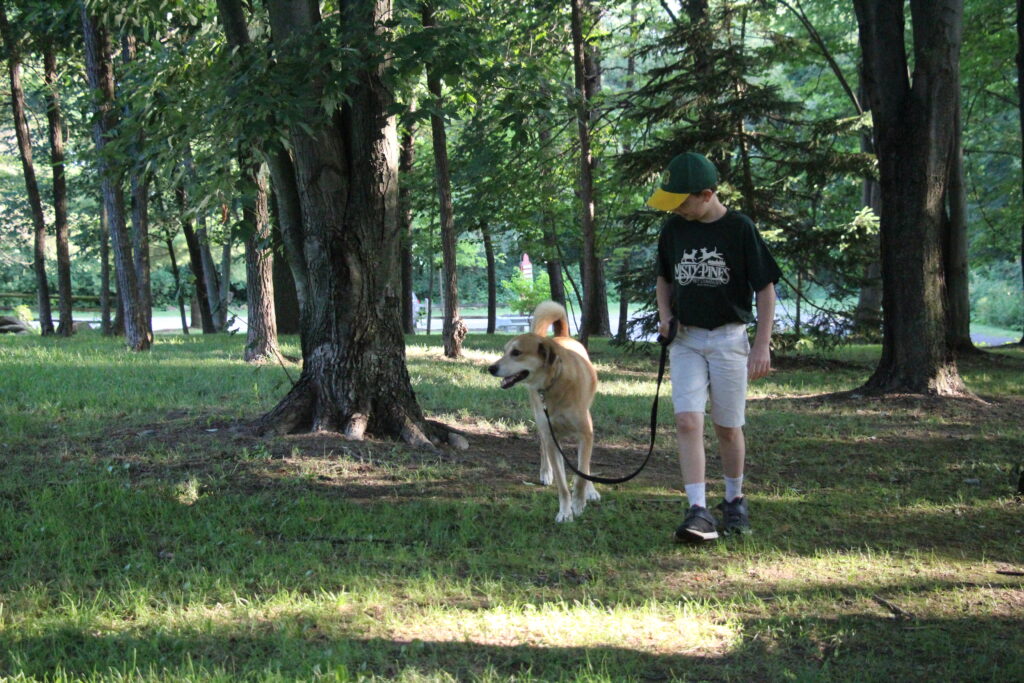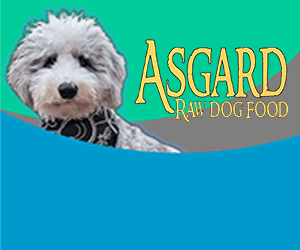Walking a dog on a loose leash is one of most difficult behaviors for a dog and human to perform together reliably because of much longer durations, distances, and distractions (scents) compared to other behaviors. Teaching a dog to stay for a couple minutes, is much easier compared to loose-leash walking ten blocks for a couple minutes. Walking your dog on a loose leash is a mental and physical exercise for both you and your dog. It is one of the many ways for you and your dog to connect and bond.
There are several behaviors and combinations of these behaviors for you and your dog to walk on a loose leash. Training these behaviors make a walk fun and challenging for both you and your dog.
“Heel” is a formal walking behavior where your dog’s front right shoulder is parallel and eight to twelve inches away from your left leg at whatever speed that left leg is moving, and when that left leg stops, a dog sits promptly facing the same direction as the handler. While heeling, your dog’s head is up and not sniffing the ground. “This Way” is a walking behavior where the dog is trained to turn and follow you while you hold the end of a loose leash, just as a horse would follow you at the end of the lead rope. “Easy” means to walk slowly. “Pull” means to pull you only on command on a taught leash, which comes in handy when walking uphill. The majority of dogs enjoy pulling. “Take a break” allows the dog to go to the end of a loose leash and sniff the ground. Smelling the environment is an extremely valuable reward. Dogs have 220 million scent receptors and love to investigate, explore, and check out odors in their environment. Saying “Take a break” or “go sniff’ to your dog to check out the environment can be highly rewarding and enjoyable.
Walking your dog should not be a time for your dog to be spreading their pee-mail (scent-marking) profusely throughout the neighborhood. When dogs profusely scent mark, they are defining their territory. In turn the other dogs in the neighborhood scent mark over your dog’s scent mark. For some dogs scent marking is often perceived as claiming the deed of the territory by other dogs and this can lead to competition, and strong on leash growling reactivity when they see another dog walking towards them.
To teach your dog to heel, gather up and loosely hold the leash in the left hand. Begin shaping this behavior by luring them with a treat or a small toy held in the right hand. Say “heel” and walk forward, keeping your dog’s right leg parallel to your left leg and keeping their attention on the object or treat in your right hand. Take two steps, stop and simultaneously cue your dog to “sit” parallel to your left side facing in the same direction as you. Reward with calm praise and a food treat. Repeat “heel,” gradually taking more steps between each stop to sit. Change direction of your walk periodically to keep your dog thinking, and use an upbeat animated tone in your voice to keep your dog’s attention. Start phasing out the lure once you feel the behavior has been shaped.
Reward your dog whenever it heels beside you. Read and listen to your dog’s body language, before they indicate that they are going to pull, stop and instruct them to sit and to look at you, reward and start “heel” again. Train “heel” in short progression sequences of distance. Ensure your two-step heel is reliable before moving on to a four-step heel, then to a six-step heel and so on. Using a hand signal cue simultaneously as your left leg stops often helps dogs to sit expediently and parallel on your left side. If your dog is pulling without being told to, stop, encourage your dog to come closer to you and start the heeling over again. Certain breeds, such as the Siberian Husky, Alaskan Malamute, or Bernese Mountain Dog, are more inclined to pull because of selective breeding for this trait. If your dog continues to pull without being asked, a head halter type of collar will be helpful. There are many types of collars and harnesses to aid you in teaching your dog to heel.
It is outside the scope of this article to discuss all the various techniques and methods of teaching owners and dogs to walk politely on a leash. Seek out professional help, such as the trainers at Misty Pines Pet Company, to teach you the various techniques and methods of teaching your dog to heel, and the other walking behaviors. Once these behaviors are trained into your dog, you and your dog will enjoy and gain the many benefits of walking politely on a loose leash. Misty Pines holds a class called “Walking Politely on a Loose Leash” periodically throughout each year specifically to train this behavior so if you need extra work specifically on your leash walking skills, the “Walking Politely on a Loose Leash” class is for you. If you need to work on general training as well, our other training classes incorporate this behavior along with various other behaviors such as sit, down, stay, come, stand, and agility obstacles. Visit us at www.MistyPinesPetCompany.com today to learn more.



